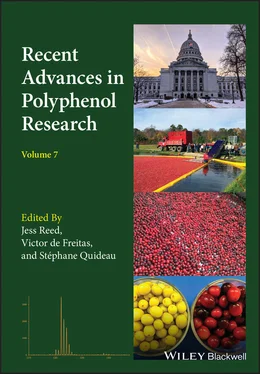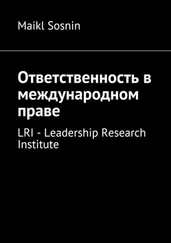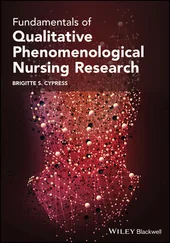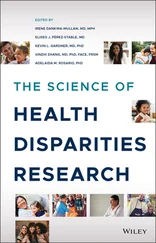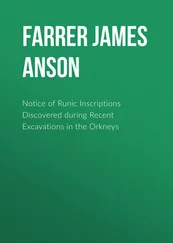Recent Advances in Polyphenol Research
Здесь есть возможность читать онлайн «Recent Advances in Polyphenol Research» — ознакомительный отрывок электронной книги совершенно бесплатно, а после прочтения отрывка купить полную версию. В некоторых случаях можно слушать аудио, скачать через торрент в формате fb2 и присутствует краткое содержание. Жанр: unrecognised, на английском языке. Описание произведения, (предисловие) а так же отзывы посетителей доступны на портале библиотеки ЛибКат.
- Название:Recent Advances in Polyphenol Research
- Автор:
- Жанр:
- Год:неизвестен
- ISBN:нет данных
- Рейтинг книги:5 / 5. Голосов: 1
-
Избранное:Добавить в избранное
- Отзывы:
-
Ваша оценка:
- 100
- 1
- 2
- 3
- 4
- 5
Recent Advances in Polyphenol Research: краткое содержание, описание и аннотация
Предлагаем к чтению аннотацию, описание, краткое содержание или предисловие (зависит от того, что написал сам автор книги «Recent Advances in Polyphenol Research»). Если вы не нашли необходимую информацию о книге — напишите в комментариях, мы постараемся отыскать её.
Recent Advances in Polyphenol Research
Recent Advances in Polyphenol Research — читать онлайн ознакомительный отрывок
Ниже представлен текст книги, разбитый по страницам. Система сохранения места последней прочитанной страницы, позволяет с удобством читать онлайн бесплатно книгу «Recent Advances in Polyphenol Research», без необходимости каждый раз заново искать на чём Вы остановились. Поставьте закладку, и сможете в любой момент перейти на страницу, на которой закончили чтение.
Интервал:
Закладка:
10 Dangles, O., Saito, N., and Brouillard, R. (1993). Kinetic and thermodynamic control of flavylium hydration in the pelargonidin‐cinnamic acid complexation. Origin of the extraordinary flower color diversity of Pharbitis nil. Journal of the American Chemical Society, 115 (8): 3125–3132.
11 Fernandes, A., Brás, N., Mateus, N., et al. (2015). A study of anthocyanin self‐association by NMR spectroscopy. New Journal of Chemistry, 39: 2602–2611.
12 Goto, T., and Kondo, T. (1991). Structure and molecular stacking of anthocyanins – Flower color variation. Angewandte Chemie International Edition, 30 (1): 17–33.
13 Jurd, L., (1963). Anthocyanins and related compounds. I. Structural transformations of flavylium salts in acidic solutions. The Journal of Organic Chemistry, 28 (4): 987–991.
14 Hondo, T., Yoshida, K., Nakagawa, A., et al. (1992). Structural basis of blue‐colour development in flower petals from Commelina communis. Nature, 358 (6386): 515–518.
15 Lehn, J.M. (1995). From molecular to supramolecular chemistry. In: Supramolecular Photochemistry: Concepts and Perspectives. Weinheim: Wiley‐VCH.
16 Mendoza, J., Basílio, N., Pina,F., et al. (2018). Rationalizing the color in heavenly blue anthocyanin. A complete kinetic and thermodynamic study. Journal of Physical Chemistry .B, 122 (19): 4982–4992.
17 Mendoza, J., Basílio, N., de Freitas, V., et al. (2019). New procedure to calculate all equilibrium constants in flavylium compounds: application to the copigmentation of anthocyanins. ACS omega, 4 (7): 12058–12070.
18 Petrov, V., Diniz, A.M., Cunha‐Silva, L., et al. (2013). Kinetic and thermodynamic study of 2’‐hydroxy–8‐methoxyflavylium. Reaction network interconverting flavylium cation and flavanone. RSC Advances, 3 (27): 10786–10794.
19 Petrov, V., Gomes, R., Parola, A.J., et al. (2008). 2’‐hydroxyflavylium: introducing flavanones into the flavylium network of chemical reactions. Tetrahedron, 64 (4): 714–720.
20 Petrov, V., Parola, A.J., and Pina, F. (2012). Isomerization between 2‐(2,4‐Dihydroxystyryl)–1‐benzopyrylium and 7‐Hydroxy‐2‐(4‐hydroxystyryl)‐1‐benzopyrylium. Journal of Physical Chemistry, 116 (31): 8107–8118.
21 Petrov, V., Stanimirov, S., Petrov, I.K., et al. (2013). Emptying the β‐cyclodextrin cavity by light. Photochemical removal of the trans‐chalcone of 4’,7‐dihydroxyflavylium. Journal of Physical Chemistry, 117 (41): 10692–10701.
22 Pina, F. (2014a). Thermodynamic and kinetic processes of anthocyanins and related compounds and their bio‐inspired applications. In: Recent Advances in Polyphenols Research. Vol. 4, Chapter 11, (eds. Romani, A., Lattanzio, V., and Quideau, S.), 341–370. West Sussex: Wiley Blackwell.
23 Pina, F. (2014b). Anthocyanins and related compounds. Detecting the change of regime between rate control by hydration or tautomerization. Dyes and Pigments, 102: 308–314.
24 Pina, F., Melo, M.J., Maestri, M., et al. (1997). Photochromism of 4'‐methoxyflavylium perchlorate. A “write‐lock‐read‐unlock‐erase” molecular switching device. Journal of the American Chemical Society, 119 (24): 5556−5561.
25 Slavcheva, S., Mendoza, J., Stanimirov, S., et al. (2018). On the multistate of 2’‐hydroxyflavylium‐flavanone system. illustrating the concept of a timer with reset at the molecular level. Dyes and Pigments, 158: 465–473.
26 Sousa, A., Cabrita, L., Araújo, P., et al. (2014). Color stability and spectroscopic properties of deoxyvitisins in aqueous solution. New Journal of Chemistry, 38 (2): 539–544.
27 Yoshida, K., Kondo, T., Okazaki, Y., et al. (1995). Cause of blue petal colour. Nature, 373 (6512): 291.
28 Yoshida, K., Mori, M., and Kondo, T. (2009). Blue flower color development by anthocyanins: from chemical structure to cell physiology. Natural Product Reports, 26 (7): 884–915.
Endnotes
1 1In previous work we have used the term mono ionized, in the sense of formation of ions. This was the term used for ions resulting from the acid‐base reactions and the respective constants were defined as ionization constants.
2 2In any case, both processes are well separated in time and the respective amplitude can be obtained.
3 3In the case of 4’‐hydroxyflavylium the trans‐chalcones are almost 100% of CB and thus equilibrium is achieved with AH+ and the trans‐chalcones.
4 4Flash photolysis is applied when there is excited state flavylium/quinoidal base proton transfer.
5 5In the case of two derivatives bearing one acylated unit, the compound with the three glucoside units has the highest effect.
6 6It is possible to observe the blue color at pseudo‐equilibrium in other systems. The peculiar behavior of HBA1 is that the purplish and blue colors are observed at equilibrium.
7 7In principle, other analytical techniques, such as nuclear magnetic resonance (NMR), can be used to access the ratio FLV/Ct. The timer can be used only for a certain time interval (a few hours), because the spectral variations at the end of the reaction become very small.
2 Proanthocyanidin Oligomers with Doubly Linked (A‐Type) Interflavan Connectivity : Structure and Synthesis
Ken Ohmori and Keisuke Suzuki
Department of Chemistry, Tokyo Institute of Technology, Japan
Keywords:A‐type, afzelechin; catechin; epiafzelechin; epicatechin; flavan; flavonoid; oligomer; proanthocyanidin; procyanidin;
2.1 Introduction
The oligomeric proanthocyanidins (PAs), i.e. the condensed tannins, constitute a large class of natural polyphenols with an extreme structure diversity. Although some of these compounds proved to show significant biological activities, such as antiviral, antibacterial, and antitumor effects, detailed studies on their biological effects at the molecular level have remained premature due to the scarce availability of pure samples. The natural products are generally obtained as a complex mixture of closely related compounds, which are hardly separable even with the aid of modern separation methods. In view of the potentially interesting bioactivities in individual compounds, this is an unfortunate situation, but may be solved by organic synthesis if general, effective synthetic routes to these compounds were developed. Given a sufficient supply of homogeneous samples for the biological study, one may expect discovery of enhanced biological activities and have access to synthetic congeners and probes for further research on the mode of action.
The tremendous structural diversity of oligomeric PAs has its origin in the combination of several elements:
1 Difference in the constituting monomers: Figure 2.1shows the representative flavan‐3‐ols contained as the monomers in the naturally occurring oligomeric PAs; that is, afzelechin (AZ), epiafzelechin (EZ), catechin (CA), epicatechin (EC), gallocatechin (GC), epigallocatechin (EGC) and their C(5)‐deoxy congeners, guibourtinidol, fisetinidol, and robinetinidol. They differ in the hydroxylation level of the A‐ring (one or two hydroxy groups) and the B‐ring (one, two, or three hydroxy groups), and in the relationship of the C‐ring substituents, cis or trans.
2 Single connectivity (B‐type): Figure 2.2shows the linear oligomers characterized by a single C–C interflavan linkage at the C(4)–C(8) position. This connectivity is schematically represented in section I of the figure. By a historic convention from the early days of catechin research, these compounds with single connectivity are called the B‐type (vide infra). The linear oligomers formed by an array of the single (B‐type) interflavan linkages constitute a huge variety of molecular entities, differing in the degree of oligomerization and in the constituent monomers. A broad range of oligomers—small to large—is seen, ranging from dimers to higher oligomers, exceeding dodecamers. Various monomers, such as AZ, EZ, CA, EC, GC, EGC, are uniformly included to form homo‐oligomers or heterogeneously included to form hetero‐oligomers. In addition, as schematically expressed by section II of Figure 2.2, the oligomers with the C(4)–C(6) interflavan bonds are also found as the minor members with type‐B linkages. Figure 2.1 Origin of the structural diversity in oligomeric PAs: structural diversity of monomers.
Читать дальшеИнтервал:
Закладка:
Похожие книги на «Recent Advances in Polyphenol Research»
Представляем Вашему вниманию похожие книги на «Recent Advances in Polyphenol Research» списком для выбора. Мы отобрали схожую по названию и смыслу литературу в надежде предоставить читателям больше вариантов отыскать новые, интересные, ещё непрочитанные произведения.
Обсуждение, отзывы о книге «Recent Advances in Polyphenol Research» и просто собственные мнения читателей. Оставьте ваши комментарии, напишите, что Вы думаете о произведении, его смысле или главных героях. Укажите что конкретно понравилось, а что нет, и почему Вы так считаете.
